With this week (24-30th June) being National Insect Week, now is a great time to turn our attention to the fascinating world of invertebrate life. Insects underpin food webs, pollinate plants, turn soils, and help decompose even the largest trees. They are crucial to creating life, and to destroying it. In short, insects might just run the world. But how much attention and appreciation do we give to these littlest of critters? Insects are inspiring if we allow them to be, and butterflies might just be the most enchanting of the lot. Searching for butterflies can add some extra magic to your South West Coast Path (SWCP) adventures.
Butterflies in Britain
There are 60 species of butterfly in Britain, ranging from the tiny Small Blue to the large and majestic Swallowtail. Some, like the Small Tortoiseshell or Large White, you may be familiar with from your garden and don’t have to look too hard to find. Others, like the Chequered Skipper or Marsh Fritillary, you’ll have to go searching a bit harder for. Butterflies have long been admired in Britain, with naturalists of old beguiled by their transient behaviour and jewel-like appearances. The spell that butterflies held over early naturalists is revealed by the marvellous, regal names they were assigned; in what other group do dukes, admirals and emperors fly?
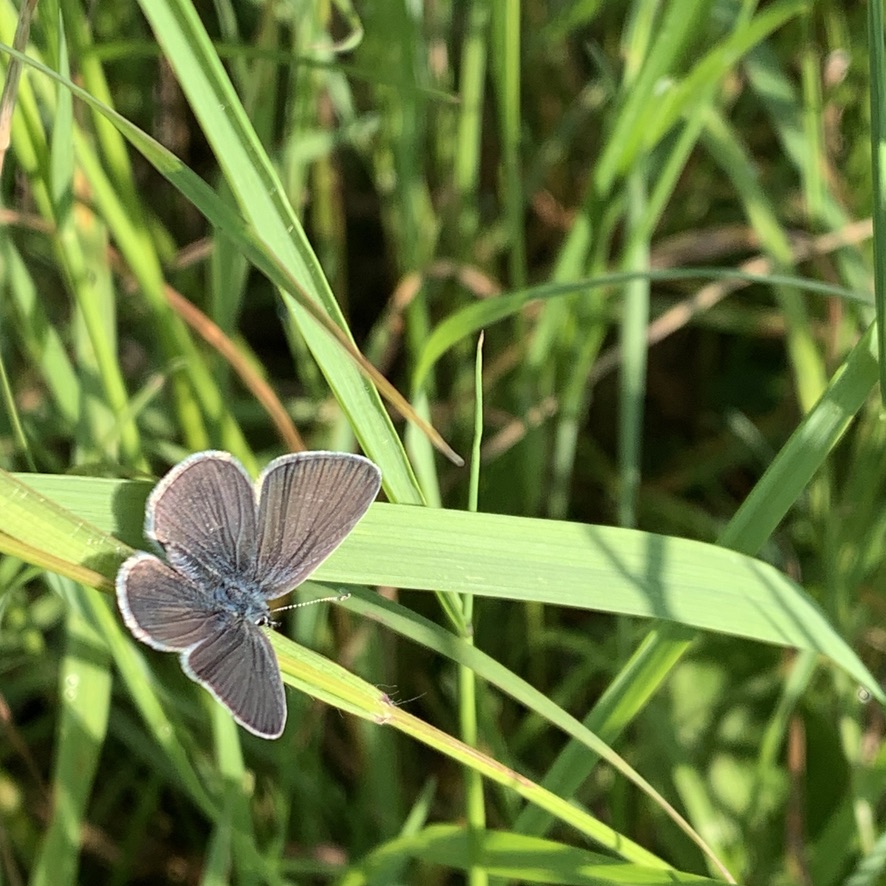
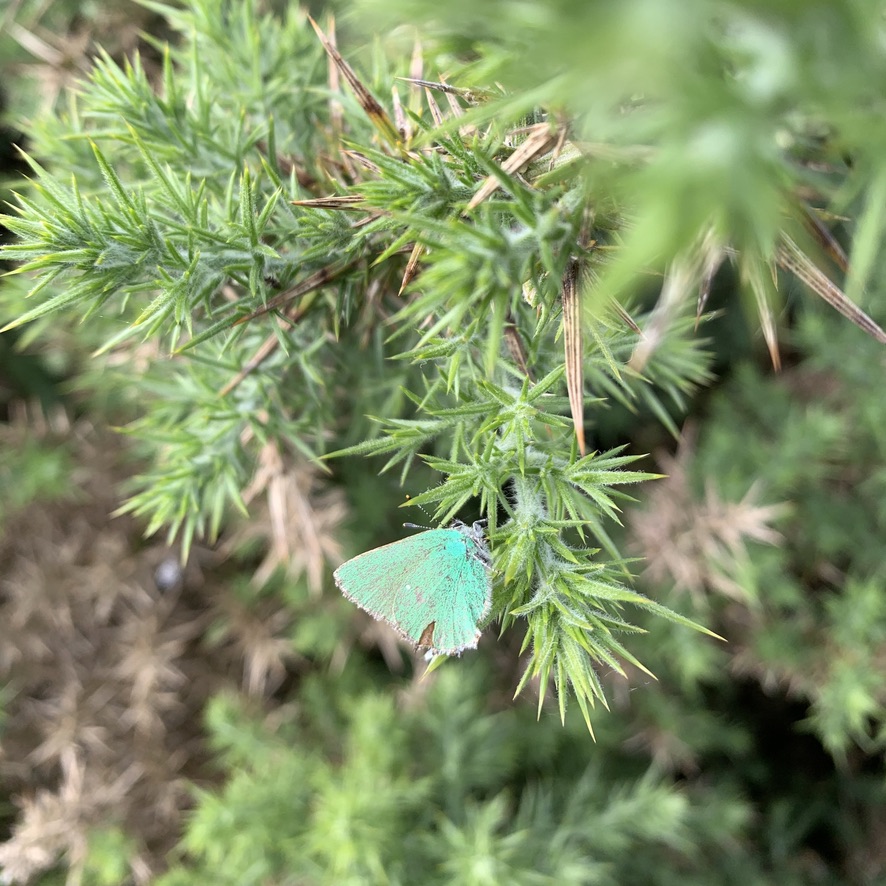
Butterflies on the SWCP
With its warmer climes, the distribution of butterflies in Britain is skewed towards the south. This is great news for the SWCP, meaning you’ll have the chance to see a large number of species. As the seasons change, so too do the butterfly species you’ll encounter on the path. In spring look for Green Hairstreaks on gorse and Small Coppers closer to the ground. In summer look for Marbled Whites and Dark Green Fritillaries on downland, or Silver Studded Blues on heathland.
Some species are very specialised in their habitats, and the SWCP gives opportunities to see a number of nationally rare species. On Devon’s north coast you’ll pass through the Heddon Valley (day 3 of our 52 day itinerary), a nationally important site for Britain’s most endangered butterfly, the High Brown Fritillary. The UK distribution of the High Brown Fritillary has declined by 96% since 1976, but keep your eyes peeled here and you might just be lucky enough to see one. Look for this large, powerful butterfly flying over the tops of bracken in July.
Later on in your SWCP journey (if travelling anticlockwise), make sure to look for the Lulworth Skipper around Dorset’s gorgeous Lulworth Cove (day 50 or 51 of our 52 day itinerary). This tiny golden butterfly is found nowhere else in Britain. Look for it in July and August on long grasses and chalk downland.
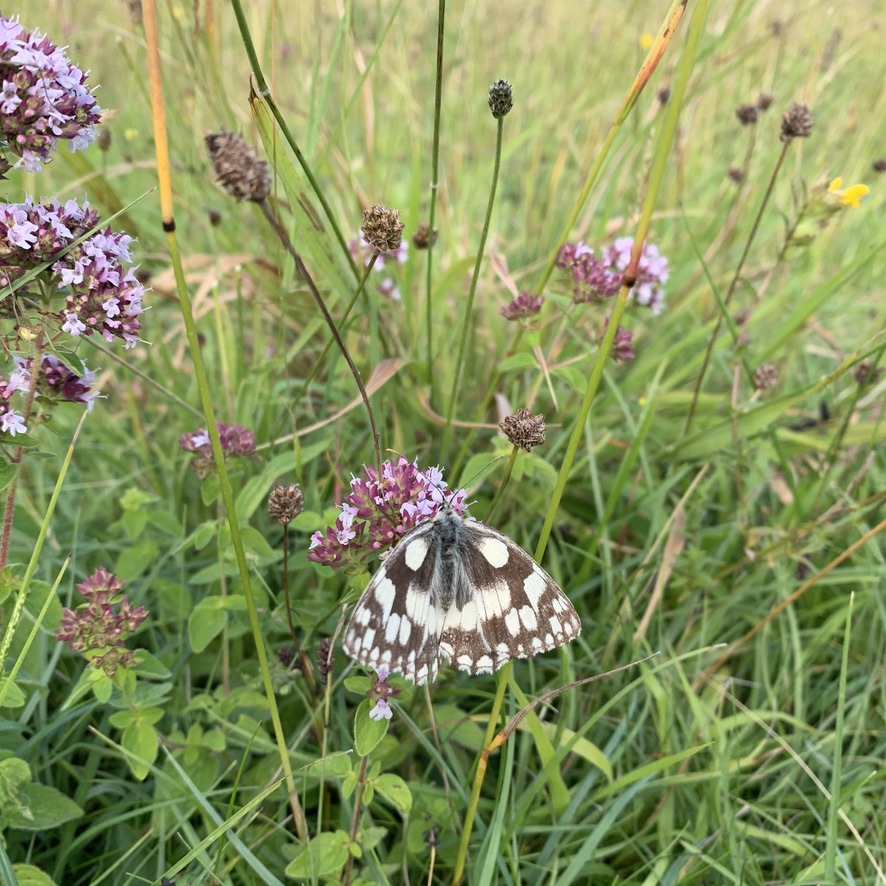
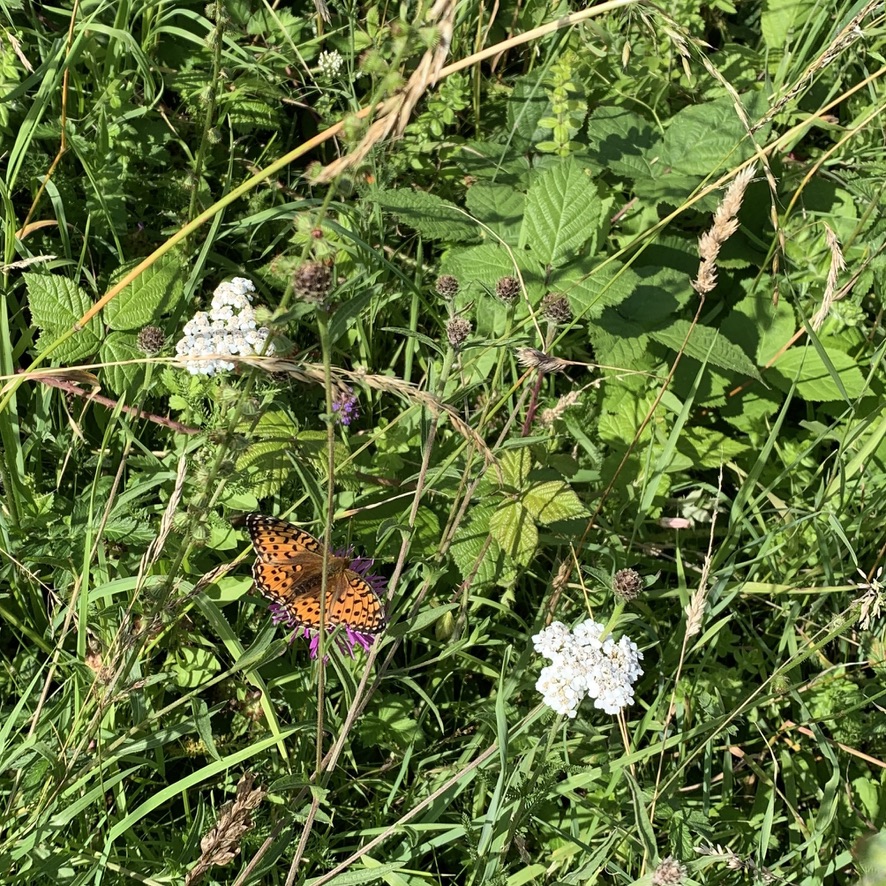
The SWCP is also a great place to look for our migratory species, as these arrive in the spring and summer from continental Europe and North Africa. Look for Clouded Yellows zig zagging over clover-rich flowery meadows throughout the summer and into the autumn. Highly variable in their numbers year-to-year, a mass migration of these butterflies during the Second World War was initially feared to be a poison gas attack drifting over the channel!
The joy of looking for butterflies on your next SWCP adventure
Searching for butterflies can be one of the simplest, purest joys in our otherwise busy lives. When was the last time you slowed down and really looked for something? As children we’re great at being observant, noticing small details and watching, seeing, not just looking. But as adults we rarely slow down and focus on one thing. Butterflies can take us to special places, usually in beautiful weather, and reignite a sense of wonder within us. As a teenager many of my summer weekends were spent persuading my father to take me to different corners of the country in search of different species. Looking for Pearl-bordered Fritillaries in Wales, Wood Whites in the Midlands, or Swallowtails in Norfolk. Not only did these excursions take us to beautiful places to tick off new species, but they created some of the best father-son memories I have from my childhood. So, reconnect with that childlike wonder that’s still inside you, embrace the joy of the search, and look for butterflies when you’re on your South West Coast Path trip!
You can read more about National Insect Week here: https://www.insectweek.org/
And learn more about Britain’s butterflies at Butterfly Conservation: https://butterfly-conservation.org/
Guest blog written by Alex Petter.
Header image photographed by Sarah Middleton on the Isle of Portland, Dorset.
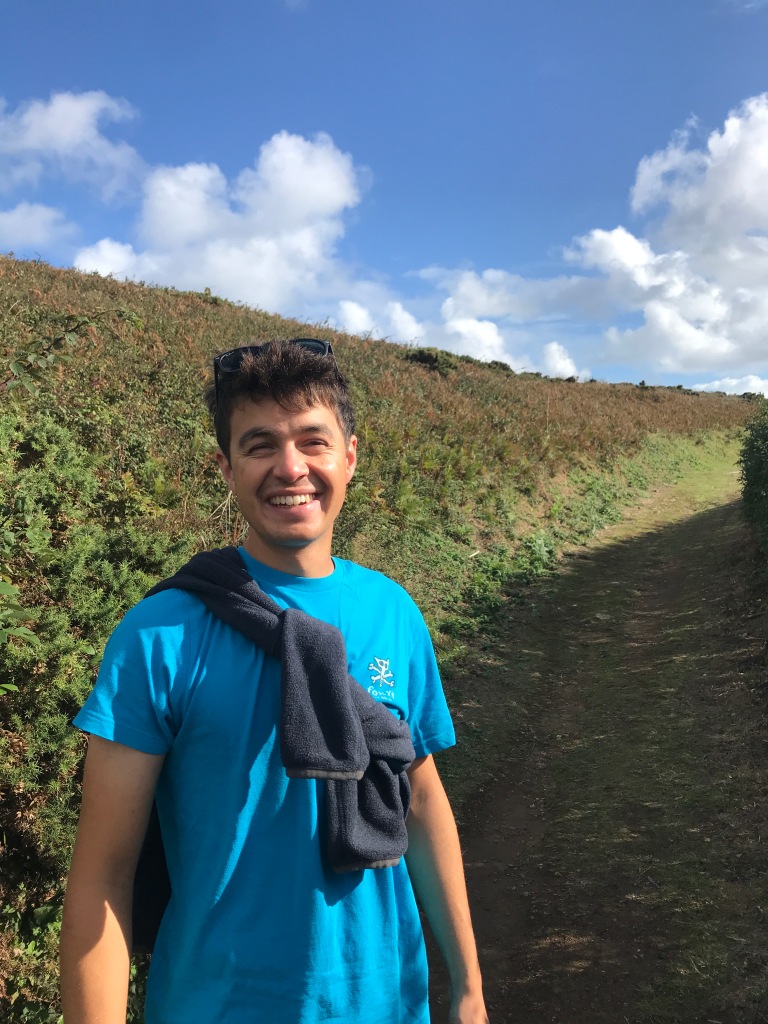
Alex is a Master’s student at the University of Cambridge studying rewilding and connections to nature. He is passionate about nature and the outdoors, and is especially interested in British butterflies. On top of his knowledge and passion for the field of entomology, Alex is a seasoned globetrotter and intrepid adventure-seeker, spending much of his free time cycling, sailing and exploring the outdoors in his all-terrain Land Rover, Izzy.

